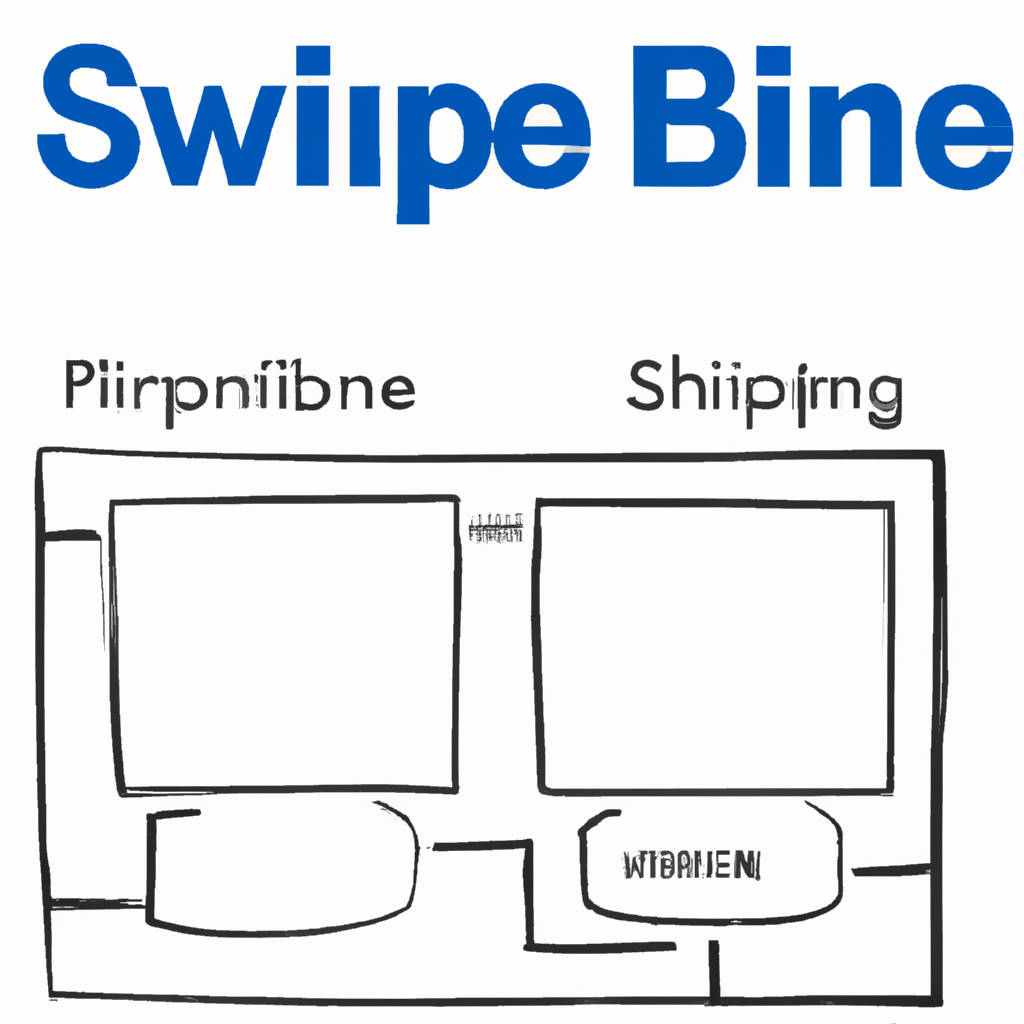Crafting a website can seem daunting, especially for those who are new to the digital world. However, with a systematic approach, you can create a website that not only looks appealing but also performs well in terms of user experience and search engine rankings. This 7-step guide will aid you in navigating through the process with ease.
The first step is defining your purpose and setting clear goals for your website. This could range from selling products or services, providing information, building a personal brand, or simply expressing creativity. Once the purpose is clear, the second step would involve planning the content and structure. This includes deciding on the pages you need, the information to include, and how they should be organized. The third step is choosing a suitable platform and hosting service. There are various options available, each with its own advantages and disadvantages.
The fourth step would be designing your website. This can either be done using website builders or by hiring a professional designer. The fifth step is creating and uploading content, ensuring it aligns with your goals and is optimized for search engines. The sixth step is testing the website thoroughly to identify and fix any issues. Lastly, the seventh step is promoting your website through various digital marketing strategies. By following these steps, you can craft a website that is engaging, functional, and successful in achieving your online objectives.

Navigating the Web Design Journey
The journey of web design is a fascinating exploration that combines creativity, technical skill, and an understanding of the digital landscape. It starts with an idea, a vision of what the website should look like and how it should function. This is followed by sketching out the layout, choosing color schemes, and defining the user interface. Web designers must understand the principles of design, the nature of the digital medium, and the needs of the client or audience.
They must be well-versed in various design software and programming languages, such as HTML, CSS, and JavaScript. The journey does not end with the creation of the website. After the website is launched, it needs to be maintained and updated regularly. Feedback from users must be taken into account and incorporated into future redesigns. The web design journey is also about staying up-to-date with the latest trends and technologies in the digital world.
With the rapid advancement of technology, web design is a field that is constantly evolving. Designers need to be flexible and adaptable, continually learning and improving. The journey of web design is not always smooth. There are challenges to overcome, problems to solve, and new frontiers to explore. But with passion, dedication, and a keen eye for design, the journey can lead to a rewarding and fulfilling career.
1. Pinpointing Objectives
Pinpointing objectives is an integral part of charting a strategic path towards success in any venture, be it personal or professional. It involves identifying the precise goals that need to be achieved within a specified timeframe. This critical process requires clarity of thought and a deep understanding of one’s capabilities and resources. When objectives are crystal clear, it becomes easier to design a roadmap to achieve them. They serve as a compass, directing all efforts and resources in the right direction.
The process of pinpointing objectives also entails determining key performance indicators (KPIs) that will help measure progress towards these goals. Without these tangible parameters, it can be challenging to gauge success or identify areas that require improvement. Moreover, setting clear objectives aids in maintaining focus, mitigating distractions, and fostering motivation, even in the face of obstacles. It allows individuals and organizations to prioritize their actions, ensuring that every step taken contributes to the ultimate goal. However, it is crucial to remember that objectives should be realistic and attainable.
They should stretch one’s abilities, but not to the extent of becoming overwhelming or unachievable. Therefore, while pinpointing objectives, one must strike a balance between ambition and feasibility. To summarize, pinpointing objectives is the cornerstone of strategic planning and crucial for achieving success. It provides direction, fosters motivation, facilitates performance measurement, and aids in prioritizing actions, thereby paving the way for fruitful outcomes.

Essential Tools for Goal Setting
Goal setting is a fundamental activity for personal and professional development, and there are a few essential tools that can enhance this process. Firstly, a clear vision is vital, as it provides a direction and motivates us to strive for success. To create this vision, visualization tools like vision boards and mind maps can be instrumental. Secondly, a well-structured plan is necessary to break down the main goal into manageable tasks.
This can be facilitated by using project management tools or apps that allow for task scheduling, tracking, and progress monitoring. Thirdly, regular reflection and review are crucial to assess the progress made and adjust the strategy if necessary. Journals or digital diaries can be useful tools for this purpose. Lastly, having a support system or a mentor can greatly enhance the goal-setting process, providing guidance, encouragement and feedback. All these tools combined can significantly increase the effectiveness of goal setting, propelling us closer to achieving our aspirations.
2. Defining Project Scope
Defining project scope is an integral part of project management and planning. It refers to establishing the boundaries of a project, specifying what will be included and what will not. The project scope outlines the specific goals, tasks, deliverables, and deadlines of the project. This is crucial to clearly communicate to all stakeholders what is expected, and to ensure everyone involved has a common understanding of the project’s objectives and limitations.
Project scope also helps in predicting the resources, such as time, money, and manpower, required to complete the project. It acts as a blueprint that guides the project team and keeps them focused on the tasks at hand, preventing the occurrence of scope creep – an uncontrolled alteration or expansion of project goals without corresponding adjustments in resources or timeline. Moreover, it provides a clear basis for decision-making when project changes are proposed.
Defining project scope requires accurate information gathering from clients, meticulous planning, and effective communication among team members to ensure everyone is working towards the same vision. It is a dynamic process, adjustable as per project requirements, but any change should be documented and communicated properly to avoid misunderstandings. In essence, project scope is the foundation on which successful project management is built, and thus, requires considerable attention to detail.

Tools for Scope Clarification
Scope clarification is an essential component in the realm of project management, and there are a variety of tools that facilitate this process. One such tool is the Work Breakdown Structure (WBS), which decomposes a project into smaller, more manageable pieces, thus providing a clear picture of the project scope. Another tool is the Scope Statement, which is a document that clearly defines the project’s objectives, deliverables, and boundaries.
The Project Charter is also an effective tool; it outlines the project’s purpose, identifies stakeholders, and establishes authority levels. Then there’s the Requirements Traceability Matrix, which ensures that all project requirements are met by linking them to specific deliverables. Lastly, Mind Mapping tools can visually represent the project scope and show the relationship between different elements. All these tools play a significant role in defining, understanding, and managing the scope of a project to ensure its successful completion.
3. Blueprinting: Sitemaps & Wireframes
Blueprinting in web development involves the creation of sitemaps and wireframes. Sitemaps are essentially the visual representation of a website’s architecture, outlining the hierarchy and structure of pages. They are essential for both web developers and search engines, as they guide the development process and help in indexing the site for search engine optimization. On the other hand, wireframes are the skeletal three-dimensional models used in the early stage of website development.
They are used to plan the layout and interaction possibilities of the site. Wireframes serve as the bridge between the conceptual stage and the actual design and development of the website. They allow developers and clients to experiment with different layout and design elements before committing to development. Both sitemaps and wireframes are integral components of blueprinting, a crucial step in the web development process. They ensure a clear understanding of the website’s structure and layout, which leads to a more efficient development process and a better end product. Therefore, sitemaps and wireframes are invaluable tools in the creation of an effective, user-friendly, and successful website.

Mapping & Wireframing Tools
Mapping and Wireframing tools are essential components in the digital product design process. These tools aid designers in creating a visual guide that represents the skeletal framework of a digital product, such as a website or application. These frameworks, often referred to as wireframes, serve as blueprints to illustrate the structure of the product and the layout of its content. They provide a clear overview of the user interface, showing what elements will be included and how they will function.
Mapping tools, on the other hand, assist in visualizing the user’s journey through the product, identifying key interactions and potential bottlenecks. They help to ensure a smooth and user-friendly experience. Some of the most popular mapping and wireframing tools include Sketch, Adobe XD, and Balsamiq. These tools offer a range of functionalities that enable designers to create detailed and interactive prototypes, helping to bridge the gap between the initial concept and the final product.
4. Curating Compelling Content
Curating compelling content is an essential aspect of successful digital marketing strategies as it provides value to an audience, increases engagement, and drives traffic. It involves gathering, organizing, and presenting information, media, or ideas to meet the needs of a specific audience. The key to effective content curation is to provide unique, interesting, and relevant content that aligns with your brand’s identity and goals. It is a meticulous process that requires strategic planning, critical thinking, and creativity. It begins with researching your target audience to understand their interests, concerns, and preferences.
From there, it’s about identifying high-quality sources, selecting the most engaging content, and presenting it in a way that captures your audience’s attention. This can include a variety of content types, such as articles, blogs, videos, infographics, and social media posts. It’s also crucial to add your own insights or takeaways to the curated content to provide additional value and perspective. Furthermore, successful content curation should be consistent and regular to keep your audience engaged and coming back for more. Ultimately, curating compelling content is not just about sharing information, but about telling a story that resonates with your audience, sparks conversations, and contributes to building a strong, loyal community around your brand.

Content Creation & SEO Essentials
Content creation and SEO essentials are integral components of modern digital marketing strategies. High-quality, relevant content is vital to engage and retain an audience, while SEO ensures that this content is discoverable and ranks high in search engine results. Content creation involves producing compelling, valuable material that resonates with your target audience. This could range from blog posts and articles to videos, infographics, and more.
On the other hand, SEO essentials include keyword research, optimization of meta tags, and internal and external link building. Together, they enhance a website’s visibility and user engagement. It is crucial to understand that these two aspects are interconnected; SEO techniques help amplify the reach of the content, and the content itself, when tailored to SEO, can boost a website’s ranking. Therefore, a balanced approach to content creation and SEO is imperative for achieving online success.
5. Crafting Visual Identity
Crafting visual identity is a critical aspect of brand development that involves the creation of a distinctive and memorable visual representation that resonally resonates with the target audience. This concept extends beyond just a logo; it envelops all visual aspects related to a brand, including colors, typography, imagery, and even the style of photography used.
A strong visual identity aids in fostering recognition and loyalty among consumers and differentiating the brand from its competitors. It is essentially the visual voice of a brand that communicates its personality, values, and promise to the users. In crafting a visual identity, it is pertinent to ensure consistency across all platforms and mediums to reinforce the brand image. This includes digital platforms like websites and social media, as well as physical touchpoints like packaging and promotional materials. Moreover, the visual identity should be flexible enough to evolve with the brand as it grows and its market changes.
It’s not a static element, but rather a dynamic one that should reflect the brand’s progression over time. Ultimately, a well-crafted visual identity aids in creating a strong brand presence, fostering customer trust, and driving business success. It is an integral part of a brand’s strategy, requiring careful planning, creativity, and strategic thinking.
Tools for Visual Design
Visual design is a creative process that requires the use of various tools to effectively communicate a message or concept. These resources range from traditional instruments such as drawing pens, sketch pads, paintbrushes, and cameras to more modern digital tools like graphic design software. Adobe Photoshop, Illustrator, and InDesign are among the most popular software used by visual designers. They have a wide range of features that allow for photo editing, vector illustration, and layout design respectively. Other helpful digital platforms include Canva, Sketch, and Figma, each offering unique capabilities that cater to different design needs. Additionally, prototyping tools like InVision and Adobe XD are indispensable for creating interactive design mockups. Meanwhile, color palette generators and typography resources are essential for establishing a design’s aesthetic appeal. These tools, when used skillfully, can greatly enhance the effectiveness of visual communication. Their ability to transform ideas into visually captivating designs is invaluable in the realm of visual design.
6. Quality Assurance: Testing Phase
The testing phase in quality assurance is a critical stage that seeks to ensure that a product, system, or service meets specified requirements and performs optimally before it is delivered to the end user. This phase involves a series of systematic activities designed to identify and rectify potential errors, bugs, or defects that may impair the functionality or usability of the product. The testing phase encompasses various types of testing procedures such as unit testing, integration testing, system testing, acceptance testing, among others. Each of these tests aims to evaluate specific aspects of the product such as its functionality, compatibility, usability, performance, and security.
The primary objective of the testing phase is to identify and fix any flaws that may negatively affect the product’s performance or user experience. Moreover, this phase can help to validate that the product is functioning as intended, thereby boosting the confidence of stakeholders in the product’s reliability and effectiveness. The testing phase is a vital part of the quality assurance process, as it helps to ensure that the final product meets the highest standards of excellence, thereby enhancing customer satisfaction and loyalty. Thus, the testing phase plays a crucial role in ensuring the success of the product and the reputation of the organization.

Key Tools for Website Testing
Website testing is a crucial step in the development process to ensure optimal performance and user experience. Some of the key tools used in this process include Selenium, an open-source tool that supports various operating systems and browsers, and JMeter, a Java application designed to load test functional behavior and measure performance. In addition, tools like Apache Bench can be used for testing server and website load capacity.
For bug tracking and issue reporting, tools like Mantis, Jira, and Bugzilla are often used. Google Analytics is another indispensable tool for analyzing website traffic and user behavior. On the other hand, tools like BrowserStack and CrossBrowserTesting offer a platform to test websites across different browsers and devices. Accessibility testing, which ensures a website is usable by people with disabilities, can be performed using tools like Wave and AChecker. These tools work together to streamline the testing process, identify issues, and improve overall website quality.
7. Ready, Set, Launch!
“Ready, Set, Launch!” is a commonly used phrase that signifies the commencement of a significant event or initiative. It’s utilized in various contexts, from the launching of a new product in the market to the commencement of a space expedition, indicating the readiness to move forward with an initiative. The phrase captures the excitement and anticipation that surrounds the start of something new. It reflects the extensive preparation and hard work that goes into making the launch successful.
It’s not just about the physical act of launching, but also the strategic planning and execution that goes behind it. For instance, in the business world, “Ready, Set, Launch!” might refer to the unveiling of a new product or service. Prior to the launch, extensive market research, product development, and marketing strategies are implemented. In the space industry, it may signify the rigorous testing, technological preparations, and strategic planning required to send a spacecraft into orbit.
Regardless of the context, “Ready, Set, Launch!” symbolizes a strategic and exciting leap into a new venture, project, or mission, the outcomes of which could potentially bring about pivotal changes. It is this thrill of embarking on a new journey, the anticipation of what lies ahead, and the satisfaction of seeing the fruit of hard work and preparation that makes “Ready, Set, Launch!” a crucial moment in various contexts and sectors.
